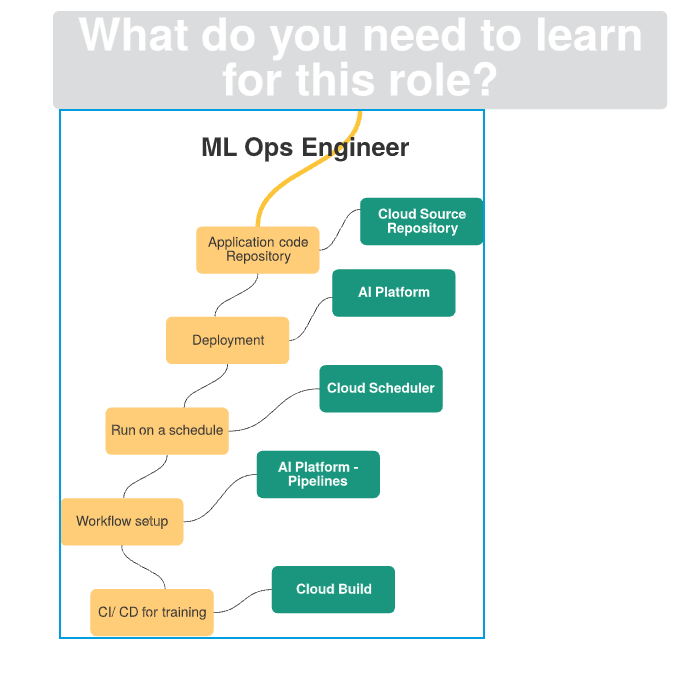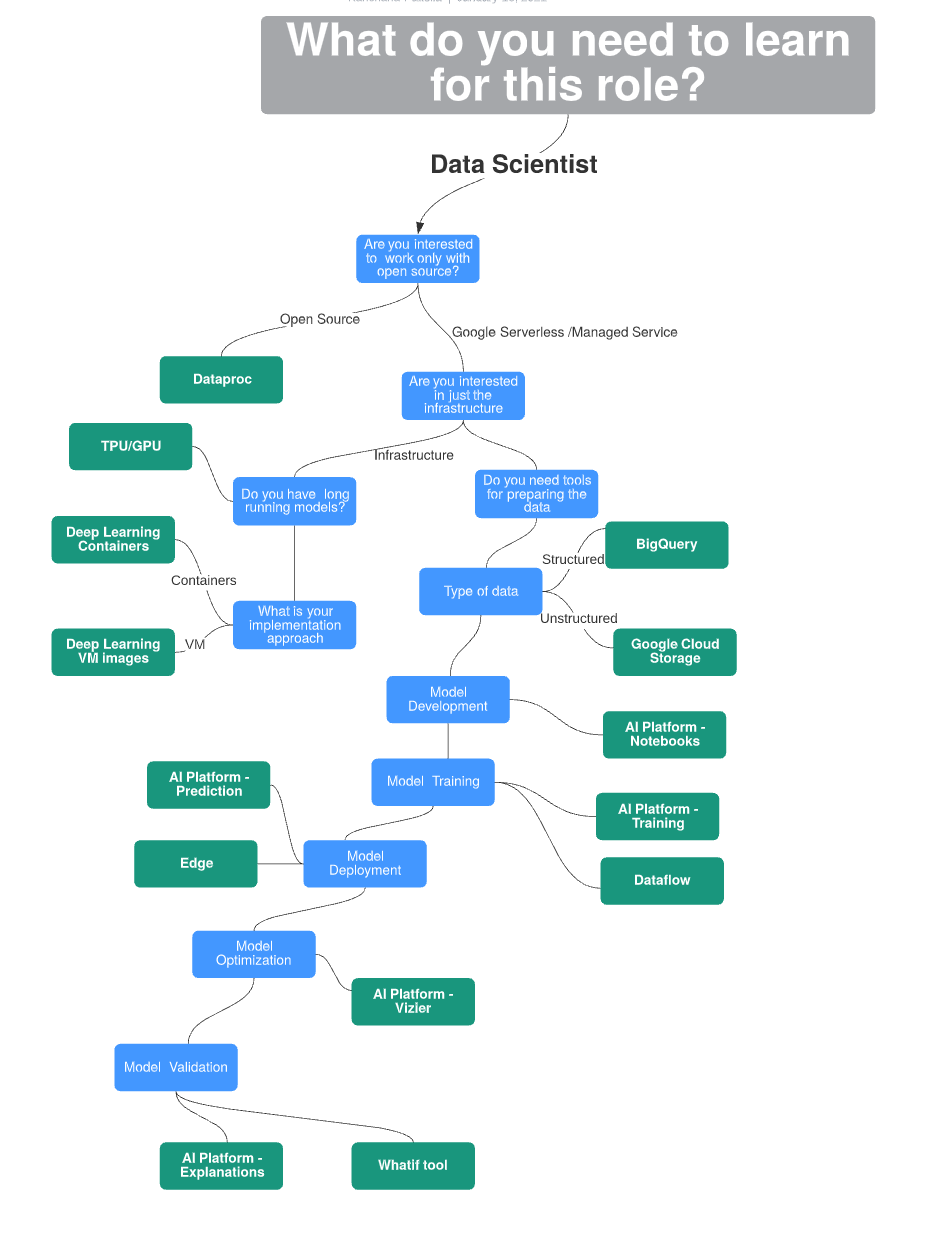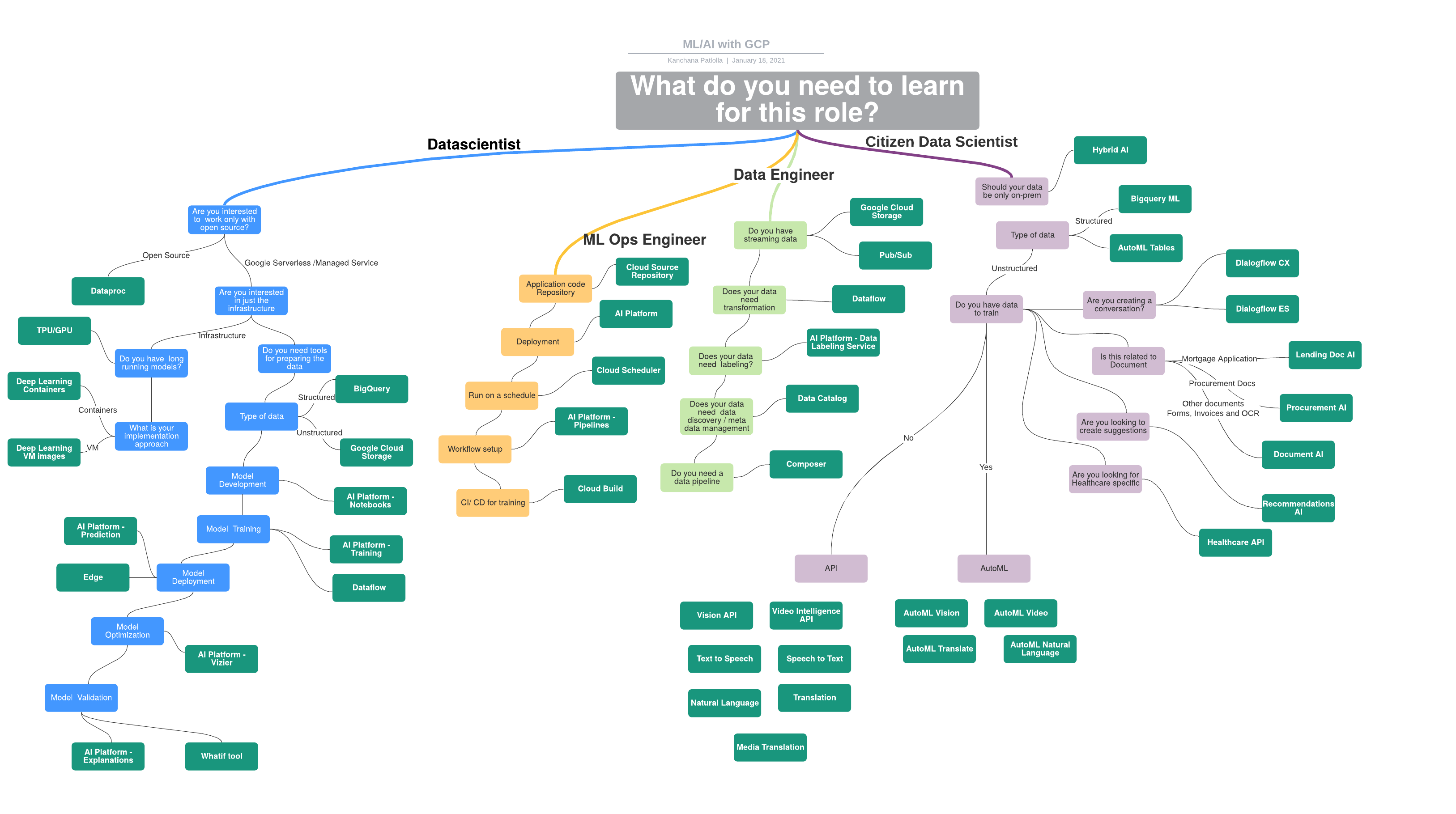Key Roles in an AI driven organization
If you are someone who is interested in understanding how the teams are formed in an AI organization or unit, this post is for you.
Most organizations have Artificial Intelligence as part of their key objectives. To help facilitate this, business units have their version of what the key roles are and their responsibilities in their teams would look like.
In this post, we will go over some of the most common key roles in an organization. We’ll look at their personas , responsibilities and the type of products most often used by each of these roles. This is by no means the entire list of personas , responsibilities in an org. Just a generalization of things I have seen across the Enterprises.
As you could see above each of these roles have several different path ways they could take based on their responsibilities. We will take some time to understand these roles , their background and what they normally would care about.
Data Engineer
Data is the new oil. Data Engineers are responsible in making sure Data makes sense to others.
Persona:
- Most likely someone with Database / Warehouse / Data Mart / Data lake background
- Understands the challenges related to data - Data duplication, Data silo , Data governance issues
- Has dealt with data transformation for business intelligence
- Understands the difference between Batch and real time.
- Can efficiently build a data pipeline
- Sometimes involved with the infrastructure of the setup (management,provisioning etc.,)
Responsible for:
- Data collection , clean up , transformation, data pipeline

ML Ops Engineer
In some organizations, Data Engineers sometimes play this role
Persona:
- Most likely someone with exposure to Data Engineering, DevOps and Machine Learning
- Understands the version control for code, data and model
- Can automate CI/CD/CT/CM (Continuous Integration/Deployment/Training/Monitoring
- Knows how to schedule, create workflow
Responsible for
- ML Pipelines and monitoring

Data Scientist
They are the unicorns with very little qualified data scientists available in the market. We will go over some of why this is in a future post.
Persona:
- Has a deep level of understanding with the business problem
- Solid grasp with statistics, data analytics , machine learning, deep learning, natural language processing etc.,
- Works with programming languages in creating models
Responsible for
- Building explainable models
- Validating between several algorithms
- Feature Engineering
- Detection of drift and skew

Citizen Data Scientist
This is an emerging set of roles. As most organizations look to redeploy their existing talents towards Data Science related jobs, this becomes more prelevant and the definitions differ
Persona:
- Has a deep level of knowledge with the business problem
- Typically a developer or a data engineer . Can sometimes be a business analyst
- Looking to build solutions with tools available by 3rd parties and cloud providers.
Responsible for
- Creating a solution for the identified business problem
- Understands all the options available and identifies the best of breed for accuracy, performance and cost

We saw above the key roles in an AI org and the relevant services available in Google Cloud enabling you to leverage and accelerate your learning and implementation
Though the diagram represents Google Cloud services, it could be substituted with any cloud provider or home grown solutions. Irrespective of the options, the key path would remain the same.

In the future posts, we’ll look at some of these Google Cloud services in detail. In the meanwhile, you can review some of these resources to get further info.
Do you want to continue the discussion with me?
Feel free to reach out at @kanchpat